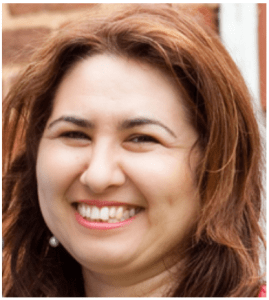According to the Centers of Disease Control and Prevention (CDC) Morbidity and Mortality Weekly Report (February 7, 2017), 1 out of 4 US adults who report excellent to good hearing already have hearing damage. The new CDC Vital Signs report by Yulia Carroll, MD, PhD and colleagues finds that many of those with hearing damage report no workplace noise exposure.
According to the new study, about 40 million US adults aged 20-69 have hearing damage in one or both ears that may be due to noise exposure. CDC found that more half (53%) of those report no exposure to loud noise at work. Based on the information they provided, researchers believe their exposure to loud sounds comes from everyday activities in their homes and communities.
The study was based on analyzed data from the 2011–2012 National Health and Nutrition Examination Survey (NHANES) to estimate the prevalence of audiometric notches and exposure to noise among adults aged 20-69 years. Using the standard NHANES audiometric protocols, audiograms were analyzed using an algorithm to identify high-frequency audiometric notches that suggest hearing loss caused by exposure to noise. The presence of a high-frequency audiometric notch was indicated when any threshold at 3, 4, or 6 kHz exceeded the average threshold at 0.5 and 1 kHz by ?15 decibel (dB) hearing level (HL) and the 8 kHz threshold was at least 5 dB HL lower (better) than the maximum threshold at 3, 4, or 6 kHz.
The study showed the presence of an audiometric notch increased with age, ranging from 19.2% among people aged 20–29 years to 27.3% among persons aged 50–59 years. The prevalence of notches was consistently higher in males than in females for both reported work exposure to noise and for no reported work exposure to noise—and this was true for both unilateral and bilateral notches.
The results also showed that 21 million US adults (19.9%) who reported no exposure to loud or very loud noise at work had an audiometric notch (bilateral or unilateral). People exposed to loud noise at work were twice as likely to have bilateral or unilateral notches than those not exposed. However, 23.5% of persons who self-reported excellent or good hearing (irrespective of noise exposure reported) had bilateral or unilateral notches (5.5% and 18.0%, respectively). A total of 70% of people exposed to loud noise in the past 12 months never or seldom wore hearing protection.
The report concludes that “Hearing screenings can help reduce delays in diagnosis and improve access to hearing aids for those with hearing loss, thus improving health-related quality of life, yet a 2014 report found that only 46.0% of adults who had any trouble hearing had seen a health care professional about their hearing in the past 5 years. Hearing loss often progresses for years before being self-perceived or diagnosed. Talking to one’s personal health care provider about hearing loss symptoms, tests, and ways to protect hearing, might support early diagnosis and access to hearing rehabilitation if needed.”
The report also discusses hearing conservation standards and guidelines, as well as steps people can take to prevent hearing loss. According to the CDC, noise exposure is the second most common cause of hearing loss (aging is the first). The louder a sound is and the more often a person is exposed to it, the more likely it will damage hearing. Common activities in homes and communities—such as using gas-powered lawnmowers or leaf blowers or attending a rock concert or ball game—can cause permanent hearing loss.
The report’s conclusions also state that, during routine exams, primary care providers can examine patients’ hearing; ask about patients’ hearing and noise exposures and inform them about the benefits of hearing protection; monitor patients with hearing loss symptoms, recommend or provide hearing tests when indicated; and counsel patients with hearing loss. However, that 40%–77% of primary care providers have not asked about or screened for hearing loss. Although there is currently a lack of data to support the benefits of regular hearing screening in adults aged >50 years, the American Speech-Language-Hearing Association (ASHA) recommends adults be screened at least every decade through age 50 years and every 3 years thereafter. Healthy People 2020 includes objectives to increase the proportion of adults who have had a hearing examination in the past 5 years and to increase the number referred by their health care provider for hearing evaluation and treatment.
The CDC recommends that clinicians—especially primary care providers—can play an important role in identifying hearing in its early stages. Doctors, nurses, and other health professionals can ask patients about exposure to loud noise and trouble hearing during routine exams. When patients show or report hearing problems, healthcare providers can make referrals to hearing specialists. And they can explain how noise exposure permanently damages hearing and counsel patients in how to protect their hearing.
For more information: visit https://www.cdc.gov/nceh/hearing_loss/default.html.
Source: CDC







Those high numbers of noise induced hearing loss quoted in this article are the reason my office has focused on promoting the best earplugs possible for an individuals lifestyle (i.e. if you’re in construction you should wear construction earplugs, if you’re a musician then you should wear musician earplugs, etc.). We also have great relationships with local MD’s and offer information about hearing loss and hearing loss prevention with earplugs to the general public, but we firmly believe the best way to reduce those noise induced hearing loss numbers are through prevention measures with custom earplugs.
Every audiologist, and every hearing aid specialist has access to clinically relevant information about the disease state of hearing loss, that can help educate physicians, staff, and patients, and subsequently improve the physicians “risk versus benefits” counseling. Yes, noise related hearing loss is a significant contributor to the prevalence of hearing loss, and so is diabetes, smoking, hypertension, cardiovascular disease, micro-vascular disease, obesity, and hyperlipidemia. Audiology and Medicine must establish strong partnership in patient care, so that more patients receive the hearing health care, and the necessary improvement in their quality of life. Bob Tysoe, Hearing Healthcare Marketing Co., Portland OR. C503 863 9250
Those of us (audiologists) working with this demographic of patient on a daily basis could have provided enough proof of this particular patient train of thought! How many times have I had patients tell me that they have no hearing problem, and even no noise exposure at work, when in fact they have both! I have long asserted that our primary care providers need to get more involved in the hearing care of their patients, and make sure they get referred to a licensed audiologist. Maybe now with this problem will get more attention thanks to this MD’s study; clearly the audiologist’s voice holds little sway.
Our practice has an excellent physician referral program. We put in a lot of leg work to get it started but it has really taken off. We are now receiving automatic referrals from PCPs for patients complaining of or screened as having a hearing loss.